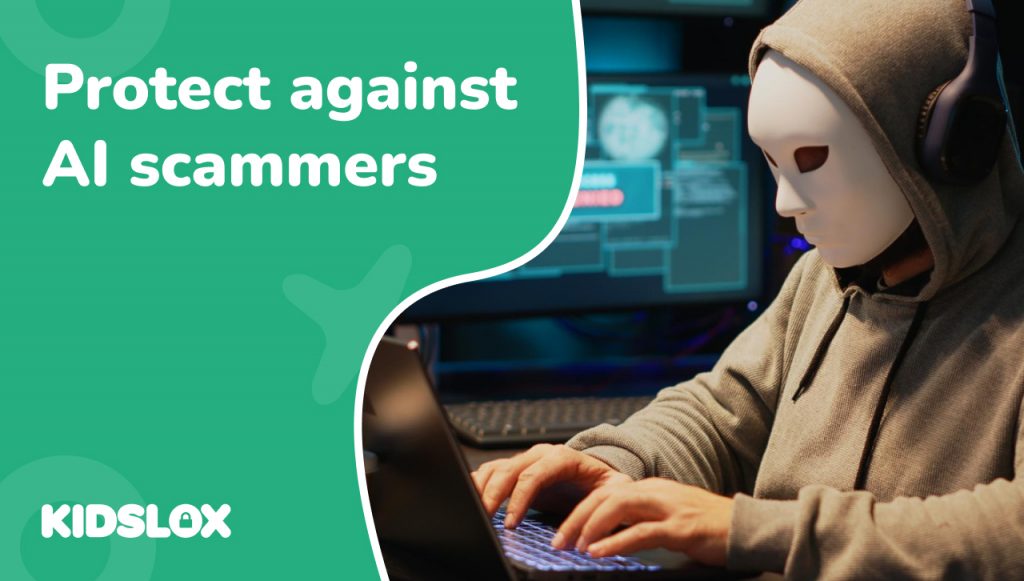Every day, billions of individuals log onto the internet via their computers, tablets, and phones.
The internet has become a fundamental part of human life, providing a wealth of information and connection with others. Like no other time in human history, we are mere milliseconds away from connecting with anyone, anywhere in the world.
However, this constant connection comes with risks. With the ease of access to personal information and the ability to remain anonymous, cyberstalking has become a serious problem.
Cyberstalking is defined as the use of electronic communications to harass or threaten someone. This harassment can take many forms, from repeatedly sending threatening or obscene messages to posting sensitive personal information about the victim online.
In extreme cases, cyberstalkers have been known to make threats against the lives of their victims.
While cyberstalking is not currently a criminal offense in many countries, it can still be a frightening and dangerous experience for those targeted. Knowing how to prevent and avoid cyberstalking is essential for keeping yourself safe online.
So what exactly is cyberstalking, and how can you protect yourself from it? In this article, we will explore:
- What is cyberstalking?
- The dangers of cyberstalking.
- Signs that you may be being cyberstalked.
- How to prevent and avoid being a victim of cyberstalking.
- What to do if you are being cyberstalked.
To keep yourself and your loved ones safe when browsing online, let’s dig in and learn more about cyberstalking.
What is Cyberstalking?
According to statistics collected over the past several years, cyberstalking instances continue to rise. In a Data & Society Research report published in 2016 8% of survey respondents said individuals or groups had stalked them online.
Another study from the Pew Research Center found that 7% of those surveyed had been the target of online harassment that left them feeling scared or uncomfortable.
These studies help to paint a picture of how common cyberstalking has become in recent years. However, these statistics may be less than accurate as many don’t know how to identify and report when they are being cyberstalked.
In order to properly understand and protect yourself from cyberstalking, it’s important to know what it is. Cyberstalking – much like physical stalking – is defined as a pattern of harassing or threatening behavior that is carried out online.
This harassment can take many different forms, but some common examples include:
- Sending threatening or obscene messages: This can be done through email, social media, or even text messages.
- Posting sensitive personal information about the victim online: This could include addresses, phone numbers, workplaces, or names of family members and friends.
- Repeatedly trying to contact the victim: This might manifest as frequently sending friend requests on social media, calling, or emailing.
- Making threats against the victim: In some cases, cyberstalkers have been known to make veiled or direct threats against their victims’ lives.
Cyberstalking can take many forms, with the primary goal of all actions is to frighten, intimidate, or harass the victim.
While cyberstalking is not currently a criminal offense in many countries, it can still be a frightening and dangerous experience for those targeted. Knowing how to prevent and avoid cyberstalking is essential for keeping yourself safe online.
How is Cyberstalking Different From Physical Stalking?
Cyberstalking may look and manifest in different ways than physical stalking, but the goal is always the same: to control, frighten, or intimidate the victim.
While both types of stalking can have a serious impact on the victim’s life, there are some key ways in which cyberstalking and physical stalking differ:
- Cyberstalking can be done anonymously: This makes it difficult for law enforcement to track down and stop the cyberstalker.
- Cyberstalking can be done without ever coming into contact with the victim: This makes it easier for the cyberstalker to target their victim without being detected.
- Cyberstalking is often less physical than physical stalking: This means that the victim may not feel as immediately threatened by the cyberstalker as they would by a physical stalker.
- Cyberstalking can be more difficult to spot: This is because the cyberstalker can carry out their harassment without ever revealing their identity to the victim.
What Are The Dangers Of Cyberstalking?
Cyberstalking is a serious problem because it can profoundly impact the victim’s life. This harassment can cause victims to feel scared, anxious, and even depressed. In extreme cases, it can lead to loss of sleep, weight gain or loss, and difficulty concentrating.
Cyberstalking can also lead to more serious problems, such as:
- Loss of data privacy: When a cyberstalker posts sensitive personal information about their victim online, this can lead to a loss of data privacy. Stalkers can use this information to exploit the victim or even steal their identity.
- Cyberbullying: In some cases, cyberstalkers may also engage in cyberbullying. This can involve sending mean or harassing messages to the victim, spreading rumors about them online, or posting embarrassing photos or videos.
- Identity theft: If a cyberstalker gains access to the victim’s personal information, they may be able to steal their identity. This can have a serious impact on the victim’s finances, reputation, and even their personal safety.
- Physical stalking: In extreme cases, cyberstalking can lead to physical stalking. This is because the cyberstalker may use the information they’ve gathered about the victim to track their whereabouts and stalk them in person.
- Violence: In the most extreme cases, cyberstalking can lead to violence. This is because the cyberstalker may become fixated on the victim and feel like they need to control them. Many victims of cyberstalking report that they have felt urged to harm themselves or even consider suicide.
What Are The Signs Of Cyberstalking?
Cyberstalking can be difficult to spot, as the stalker can carry out their harassment without ever revealing their identity to the victim. However, there are some signs that you may be being cyberstalked, including:
You begin to receive unwanted or unsolicited messages.
One of the main signs of cyberstalking is receiving unsolicited or unwanted messages from someone. This can include text messages, emails, social media messages, and even phone calls.
These messages may be threatening or harassing in nature, or they may simply be unwanted and persistent. Either way, if you are receiving these types of messages from someone you don’t know, it’s a good sign that you may be being cyberstalked.
You find strange messages or items appearing in your inbox.
Another sign of cyberstalking is finding strange messages or items appearing in your inbox. This can include emails, social media messages, and even physical items.
These messages or items may be from the stalker themselves, or they may be from someone the stalker has recruited to help them with their harassment. Either way, they can be unsettling and upsetting.
You notice that you are being monitored online.
If you notice that you are being watched or monitored online, it’s a good sign that you are being cyberstalked. The stalker may be tracking your online activity, monitoring your social media accounts, or even following you on GPS.
This monitoring can make you feel scared and violated. It can also be difficult to spot, as the stalker may be using multiple devices to carry out their surveillance.
You begin to feel scared or anxious.
One of the most common signs of cyberstalking is feeling scared or anxious. This is because the stalker is making you feel like you are in danger. You may feel like you are being watched, followed, or even threatened.
This fear can have a serious impact on your mental health. It can also make it difficult to concentrate, sleep, or eat. If you are feeling scared or anxious, it’s important to reach out for help.
What Can You Do To Prevent Cyberstalking?
There are a number of steps you can take to prevent cyberstalking, including:
Be aware of the signs.
The first step to preventing cyberstalking is to be aware of the signs that someone is actively stalking you. If you notice any of the signs listed above, it’s important to reach out for help from a trusted friend or family member.
Don’t engage with the stalker.
It can be tempting to engage with the stalker in an attempt to reason with them or get them to stop. However, this is usually not a good idea. In most cases, engaging with the stalker will only make the situation worse. In many cases, they may have the ability to steal your identity or track your whereabouts.
Block and report the stalker.
If you are being harassed online, it’s important to block and report the stalker. This will help to prevent them from being able to contact you further. You should also consider changing your privacy settings to make it more difficult for the stalker to find you.
Keep a record of the stalking.
If you think you are being stalked, it’s essential to keep a record of the stalking. This can be difficult, but it can be helpful if you need to report the stalking to the police or take legal action against the stalker.
Avoid sites where you might be stalked.
There are some sites where you are more likely to be stalked. Social media sites, dating sites, and forums are all popular places for stalkers to find their victims. If you are being stalked, it’s important to avoid these types of sites.
Reach out for help.
Finally, if you are being cyberstalked, it’s essential to reach out for help. This can be from a trusted friend, family member, or professional organization. There are many organizations that can offer support and advice if you are being stalked, and local law enforcement has the skills and technology to respond to cyberstalking cases.
Is Cyberstalking Illegal?
Cyberstalking is a serious problem, and it’s important to know that it is illegal in many jurisdictions. In the United States, for example, cyberstalking is a federal crime. This means that if you are being stalked online, you can report it to the police.
Cyberstalking is also a crime in many other countries. For example, in the United Kingdom, cyberstalking is covered by the Malicious Communications Act. This act makes it a crime to send threatening or abusive messages electronically.
If you are being stalked, it’s important to reach out for help. There are many organizations that can offer support and advice, and local law enforcement has the skills and technology to respond to cyberstalking cases.
Take Steps Today to Stay Safe Online
Cyberstalking continues to become a serious problem. If you are being stalked, it’s important to take steps to protect yourself and to get help. Remember, cyberstalking is a crime, and you can report it to the police. Many organizations can offer support and advice if you are being stalked.
Cyberstalking is only one of many dangerous activities that take place online. To stay safe, it’s important to be aware of the risks and to take steps to protect yourself.
Safety online begins with awareness. There are many risks to consider, but you can stay safe online by taking steps to protect yourself.
Even if you are not currently the victim of cyberstalking, it’s essential to be aware of the risks and take steps to protect yourself. Cyberstalking can happen to anyone, so it’s important to be prepared.
The best way to protect yourself from cyberstalking is to take steps today to stay safe online, such as:
- Practice safe web browsing: Be careful about the websites you visit and the information you share online. Cyberstalkers can find their victims by tracking their online activity.
- Keep your personal information private: Don’t share your personal information, such as your address, phone number, or email address, online. If a cyberstalker gets access to your personal information, they can use it to find and contact you.
- Be cautious about meeting people online: If you meet someone online, be cautious about meeting them in person. Cyberstalkers may use online dating sites or social media to find their victims. If you do meet someone in person, make sure to meet in a public place and tell a friend or family member where you’re going.
- Use web blocking software: Web blocking software can help to protect you from online behavior that can often lead to cyberstalking. This software can block websites, restrict access to personal information, and provide other tools to help you stay safe online.
If you are looking for effective ways to protect your family online, check out Kidslox. A powerful parental control application, Kidslox allows you to block websites, set time limits, and monitor your child’s online activity.
You can manage multiple devices from one account to ensure that your family stays safe online. With web blocking, content filtering, and other features, Kidslox is the perfect way to keep your family safe online.
For more tips on staying safe online, check out Kidslox. Discover our software capabilities, as well as other resources that will help you to keep your family safe online.







